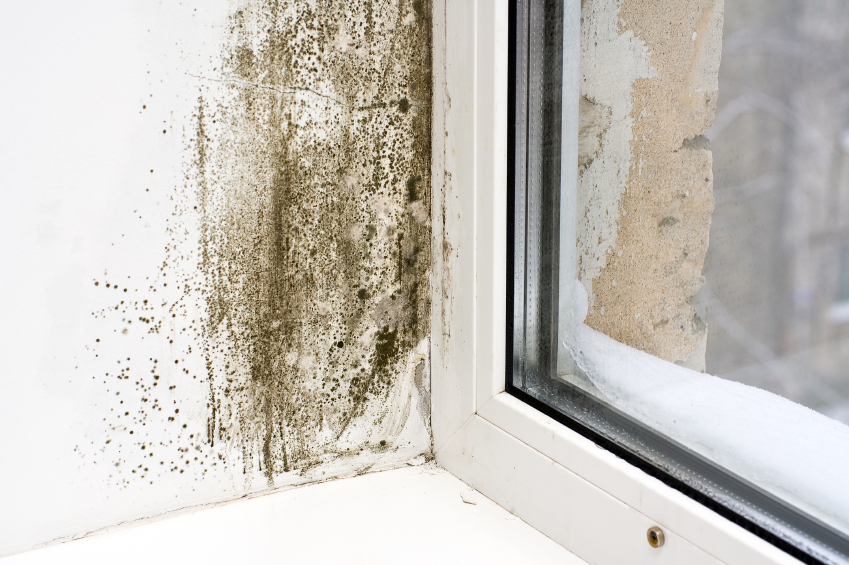4 Reasons Why Your Damp House is Wrecking Your Health
 A little leak isn't something to ignore. Whether the leakage is coming from a hole in your roof or a problem with the plumbing, mold and bacterial growth can begin within 24 - 48 hours of a moisture intrusion, even though you might not notice immediate water damage. Damp houses have been proven beyond any doubt to cause respiratory illnesses, and a host of other health issues, too.
A little leak isn't something to ignore. Whether the leakage is coming from a hole in your roof or a problem with the plumbing, mold and bacterial growth can begin within 24 - 48 hours of a moisture intrusion, even though you might not notice immediate water damage. Damp houses have been proven beyond any doubt to cause respiratory illnesses, and a host of other health issues, too.
"Moisture in homes has been identified again and again to be associated with respiratory problems and other detrimental health to people within homes," says Dr. Richard Shaughnessy, director of the University of Tulsa’s Clean Air Program. "There's mold, there's bacteria, and the dampness is conducive to having more pests in the home. Along with that, dust mites are more inclined to be in a home with higher humidity and moisture. There's a whole host of agents that may be responsible for the health effects related to moisture."
Top 4 Reasons to Nip Moisture and Dampness in Your Home in the Bud
- Bacteria: Moisture is prime breeding ground for bacteria. No amount of antibacterial cleaning products can compensate for a damp house. Bacterial colonies grow on moist organic matter, such as wooden wall boards and floorboards.
- Pests: Patrick Breysse, of Johns Hopkins University's Bloomberg School of Public Health, reports, "When there's a lot of water damage in a home, there's higher mouse allergens, there's higher cockroach allergens. We find that these types of homes in general are not healthy environments for asthmatic kids." Cockroach and rat waste material is a known trigger of asthma, and these pests flourish in damp environments.
- Dust mites: If you're allergic to dust mites, you're all too familiar with the stuffy nose, sneezing, itchy eyes, respiratory problems, and asthmatic symptoms that they cause. According to the University of Nebraska Extension Services, dust mites thrive in temperatures around 80 degrees F, and humidity levels above 60%. To stop dust mite growth, keep your house below 50% humidity. Air conditioning has proven to be helpful to people with dust mite allergies, as it simultaneously cools and dehumidifies the air.
- Mold: "The underlying public health message is that we know that people get sick from living and working in damp spaces. The things that make them sick all relate to dampness. Mold -- the smell, the visibility of mold -- becomes an indicator," states Dr. Harriet Amman, a toxicologist at the University of Washington. An emerging body of data suggests mold itself can cause respiratory illnesses and allergic reactions. However, "whether the illness is directly a result of mold and exposure to mold, or whether it is a result of mold and other biota that are encouraged to grow because there's water is not as straightforward to answer," claims Paula Schenk, UCHC Department of Community Medicine and Health Care. Mold might be making you sick, or it might just be an indication of a moisture problem.
Prevent and Eliminate Moisture Problems in the Home
You can take a stand against respiratory illnesses by stopping moisture in its tracks, with the help of these tips:
- To prevent damp walls and floorboards, avoid condensation by installing adequate ventilation. Install an exhaust fan in your bathroom and a range hood in your kitchen, and vent your dryer to the outside.
- Find and repair all structural (especially roof or foundation) and plumbing leaks promptly.
- If you notice water intrusion or mold growth, eliminate the source of moisture and remove the damp material immediately.
- Run a dehumidifier during very humid weather.
- Hire a professional to insulate areas of your home, such as the exterior walls or basement, as required.
This article was updated November 20, 2017.
Looking for a Pro? Call us (866) 441-6648

Cleaning Average Costs
Cleaning Services Experiences

New Ladder Installation Will Make Halloween Less Scary This Year

Replacement Of A Light Fixture That Literally Fell Off The Ceiling



